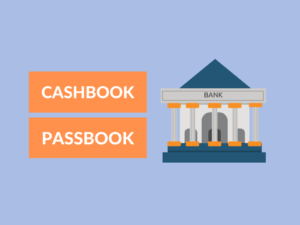The Difference Between Cash Credit and Overdraft
Introduction
When it comes to managing finances, there are various credit options available to individuals and businesses. Two commonly used forms of credit are cash credit and overdraft. While they may seem similar, there are important differences between the two. In this article, we will explore the definitions, examples, uses, and key differences between cash credit and overdraft, helping you understand which option may be suitable for your specific financial needs.
What is Cash Credit?
Cash credit is a type of short-term borrowing facility provided by banks to individuals and businesses. It allows them to withdraw funds from their account, even if the account balance is zero or in a negative position. The maximum credit limit is predetermined by the bank based on the borrower’s creditworthiness, income, and other factors. Interest is charged only on the amount withdrawn.
Examples of Cash Credit
1. Mr. Anderson’s business has a cash credit facility of $10,000 with an interest rate of 9%. He withdraws $5,000 to purchase new inventory.
2. Sarah’s personal cash credit limit is set at $1,000, of which she withdraws $500 to cover unexpected medical expenses.
Uses of Cash Credit
1. Managing working capital: Businesses utilize cash credit to meet day-to-day operational expenses, pay wages, or purchase inventory.
2. Handling emergencies: Individuals can rely on cash credit for unexpected expenses, such as medical bills or vehicle repairs.
What is Overdraft?
Overdraft is a financial facility allowing individuals and businesses to withdraw more money from their bank account than the available balance. It is a short-term credit provided by banks where interest is charged only on the overdrawn amount. Overdrafts are usually subject to certain limits and interest rates agreed upon by the bank and the customer.
Examples of Overdraft
1. Petra’s business has an overdraft limit of $20,000. She withdraws $25,000 to purchase new equipment.
2. John’s personal overdraft facility allows him to overdraw up to $500 to cover his rent until his next paycheck arrives.
Uses of Overdraft
1. Managing temporary cash shortages: Overdrafts provide flexibility in managing unforeseen expenses or temporary cash shortfalls.
2. Avoiding bounced payments: Overdrafts help prevent returned checks or declined transactions, ensuring smooth business or personal cash flow.
Differences Between Cash Credit and Overdraft
| Difference Area | Cash Credit | Overdraft |
|---|---|---|
| Eligibility and Approval | Requires a formal application process and approval from the bank. | Often pre-approved and automatically provided to eligible individuals or businesses. |
| Interest Calculation | Interest is charged only on the withdrawn amount. | Interest is charged on the overdrawn amount regardless of usage. |
| Maximum Limit | Determined by the bank based on the borrower’s creditworthiness and income. | Usually pre-determined and agreed upon by the bank and the customer. |
| Usage Limitation | No specific limitations on how the borrowed funds can be utilized. | May have restrictions on the purpose of the funds, such as business expenses only. |
| Repayment Terms | Flexible repayment terms agreed upon by the borrower and the bank. | Usually short-term, requiring prompt repayment when the account balance is positive. |
| Collateral Requirements | May require collateral, such as assets or personal guarantees, depending on the credit limit. | Typically does not require collateral for smaller overdraft limits. |
| Application Fees | May involve application and processing fees, depending on the bank’s policies. | Often does not involve application or processing fees. |
| Flexibility | Provides more flexibility in terms of usage, repayment, and credit limit adjustments. | Generally less flexible due to predefined limits and repayment terms. |
| Account Balance | Can be zero or negative during the utilization period. | Can be zero, but not negative during the utilization period. |
| Interest Rates | Interest rates are generally lower compared to overdrafts due to rigorous credit checks. | Interest rates may be higher due to the convenience and accessibility provided. |
Conclusion
While both cash credit and overdraft offer similar benefits of accessing additional funds when needed, there are significant differences based on eligibility, interest calculation, usage limitations, repayment terms, and more. It is essential to understand these differences and evaluate your specific financial requirements before choosing between cash credit and overdraft.
People Also Ask
Q: What are the common eligibility criteria for cash credit and overdraft?
A: Cash credit requires a formal application process, creditworthiness evaluation, and income verification. Overdraft may be pre-approved based on account activity, credit history, and relationship with the bank.
Q: Can cash credit and overdraft both be used for personal and business purposes?
A: Yes, both cash credit and overdraft can be utilized for personal and business needs. However, overdrafts may have restrictions on the purpose of the funds, such as being limited to business expenses only.
Q: Are cash credit and overdraft suitable for long-term financing?
A: Cash credit and overdraft are intended for short-term financing needs. For long-term capital requirements, other credit options like loans may be more appropriate.
Q: Can I repay the borrowed amount in installments with cash credit and overdraft?
A: Cash credit offers more flexibility in terms of repayment terms, allowing borrowers to repay in installments. Overdrafts, on the other hand, typically require prompt repayment once the account balance turns positive.
Q: Will my credit score be impacted if I utilize cash credit or overdraft?
A: Utilizing either cash credit or overdraft can impact your credit score if the borrowed amount is not promptly repaid or if the credit facility is misused. It is important to manage your credit responsibly to avoid any negative effects on your credit score.


